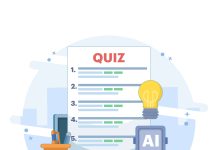As business leaders, we are always in a living case study, but that experience is particularly vivid in the current moment. Millions of employers and employees are defining in real time the new normal for work practices. For engineers, designers, managers, marketers, analysts, professional services providers, thought workers, and paper- (or byte-) pushers of all types, the questions of where and how to work are up for grabs as work life settles into the new post-pandemic normal. The only certain thing is that we are not returning to the professional services office routine of three years ago. Our work lives are changed forever.
Many leaders and organizations are looking for answers. What works? How do people stay connected? How do we ensure equitable opportunity and growth? How do we protect innovation and productivity? What will employees value about the workplace? What is the workplace?
The reality is we have many hypotheses and abundant small-scale data points but no consistent answers about the approach to hybrid work. It’s a perfect environment for “test and learn.” We can apply the best practices for learning environments and design thinking to the living case study of making hybrid work effective.
5 Tips to Define Experiments About Hybrid Work
How should employers be defining experiments about hybrid work? Here are five valuable tips:
- Define what matters and then look for ways to measure it. Measure the baseline right now so you can understand the deltas as you move forward. What matters to your organization about hybrid work might be productivity, employee engagement, the rate of new product launches, customer satisfaction, employee attrition, or promotion rates. The conversation about what you will measure will clarify what you will design for.
- Be structured and unstructured in your observations. Having defined what you will measure, use that as a structure to collect data, but periodically ask, “What else are we seeing?” Hybrid work is human performance design, and there will always be unexpected insights.
- Test the Minimum Viable Product/Process (MVP)—and don’t forget that’s what it is. Before you roll out a new management practice, collaboration system, or social connections program, find a way to give a small-scale, jury-rigged version a whirl. Then make the next version better. But be intentional about reviewing what worked and what didn’t. Too often, we implement an idea and forget to pay attention to what we are learning.
- Set a time frame. Tests (and employees) need a time frame. The ambiguity of the pandemic and the loss of routine has been particularly paralyzing for many of us. One of the few things we can define with clarity is how long we’ll try a policy or a structure. Be clear with yourself and your team: We are trying this approach for three months or two weeks or a few hours. Scale the time frame to the value of the data collection. A time frame also reminds us to pause and reflect on what we’ve learned rather than just morph into a new way of working.
- Change a limited number of variables at a time. This is tough to do, particularly in the face of universal change in so many dimensions of our lives, but recognize that changing work locations, regular meeting cadence, reporting methods, leader interactions, team social interactions, and tools and systems all simultaneously make sorting out what’s working for you and your team more challenging. Look for what you can maintain as intentionally as you look for what you need to change for the future.
Take an Incremental Approach
Companies and employees need to be intentional about experimenting our way into hybrid work. This means admitting what we know, what we don’t know, and what we are trying. It may mean being more flexible and patient—and perhaps taking a more incremental approach than we’d like. Most importantly, everyone needs to keep an experimental mindset. (This is a living case study, remember?) Some of what you try will not work; some of it will work in unexpected ways. We are taking steps toward the future of work.


